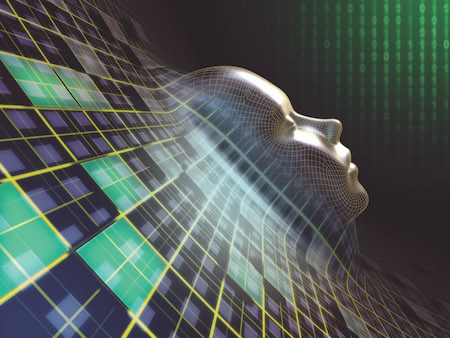Recently the robotics industry celebrated its 50-year anniversary. We have used robots for more than five decades to empower people to do things that are typically dirty, dull and/or dangerous. The industry has progressed tremendously over the period from basic mechanical assist systems to fully autonomous cars, environmental monitoring and exploration of outer space. We have seen tremendous adoption of IT technology in our daily lives for a diverse set of support tasks. Through use of robots we will see a new revolution, as we not only will have IT support from tablets, phones, computers but also systems that can physically interact with the world and assist with basic daily tasks, work, and leisure activities.
The present document is a summary of the main societal opportunities identified, the associated challenges to deliver desired solutions and a presentation of efforts to be undertaken to ensure that US will continue to be a leader in robotics both in terms of research innovation, adoption of the latest technology and adoption of appropriate policy frameworks that ensure that the technology is utilised in a responsible fashion.
Main Findings
Over the last 5-6 years we have seen introduction of 600,000 new jobs in manufacturing. During the same period, we have seen significant growth in adoption of robot systems in industry. The last three years have seen quarter by quarter records in sales of robot systems for use in manufacturing. The USA has never utilised as many robots as they do today. During the same period we have seen creation of another 600,000 jobs for manufacturing.
A major new application domain has been in the adoption of collaborative robots that can operate side-by-side with humans. New standards (ISO 10218 and ISO/TS 15066) for utilisation of collaborative systems have provided a framework for how to design systems that easily can be adopted for a diverse set of tasks in a cost-efficient manner.
Gradually sensors and computing power have become cheap enough to be easily adopted for robot applications, which is resulting in a revolution in control and flexibility of systems. However, the methods adopted for design, implementation and deployment are still relatively simple. There is a need for a continued effort to utilise modern methods in control and use of a richer set of sensors to deliver more flexible robot systems that have user interfaces that allow utilisation with no or minimum training. There is a need for major new research on human robot interaction methods.
A major limitation in the adoption of robot manipulation systems is lack of access to flexible gripping mechanisms that allow not only pick up but also dexterous manipulation of everyday objects. There is a need for new research on materials, integrated sensors and planning / control methods to allow us to get closer to the dexterity of a young child.
Logistics
Not only manufacturing but also logistics is seeing major growth. E-commerce is seeing annual growth rates in excess of 40% with new methods such as Amazon Express, Uber Food – new commerce models all driving new adoption of technology. Most recently we have seen UPS experiment with use of Unmanned Vehicles for last mile package delivery. For handling of the millions of different everyday objects there is a need to have robust manipulation and grasping technologies but also flexible delivery mechanisms using mobility platforms that may drive as fast as 30 mph inside warehouses. For these applications there is a need for new R&D in multi-robot coordination, robust computer vision for recognition and modelling and system level optimisation.
Other professional services such as cleaning in offices and shops is slowly picking up. The layout of stores is still very complex and difficult to handle for robots. Basic navigation methods are in place but it is a major challenge to build systems that have robust long-term autonomy with no or minimal human intervention. Most of these professional systems still have poor interfaces for use by non-expert operators.
Domestic Market
For the home market the big sales item has been vacuum and floor cleaners. Only now are we starting to see the introduction of home companion robots. This includes basic tasks such as delivery services for people with reduced mobility to educational support for children. A major wave of companion robots are about to enter the market. Almost all these systems have a rather limited set of tasks they can perform. If we are to provide adequate support for children to get true education support or for elderly people to live independently in their home there is a need for a leap in performance in terms of situational awareness, robustness and types of services offered.
Autonomous Systems
A new generation of autonomous systems are also emerging for driving, flying, underwater and space usage. For autonomous driving it is important to recognise that human drivers have a performance of 100 million miles driven between fatal accidents. It is far from trivial to design autonomous systems that have a similar performance. For aerial systems the integration into civilian airspace is far from trivial but it does offer a large number of opportunities to optimise airfreight, environmental monitoring, etc. For space exploration it is within reach to land on asteroids as they pass by earth or for sample retrieval from far away planets. For many of these tasks the core challenge is the flexible integration with human operators and collaborators.
The emergence of new industrial standards as for example seen with Industry 4.0 and the Industrial Internet facilitates access to cheap and pervasive communication mechanisms that allow for new architectures for distributed computing and intelligent systems. The Internet of Things movement will facilitate the introduction of increased intelligence and sensing into most robot systems and we will see a significant improvement in user experience. The design of these complex systems to be robust, scalable, and interoperable is far from trivial and there is a new for new methods for systems design and implementation from macroscopic to basic behaviour.
As we see new systems introduced into our daily lives for domestic and professional use it is essential that we also consider the training of the workforce to ensure efficient utilisation of these new technologies. The workforce training has to happen at all levels from K-12 over trade schools to our colleges. Such training cannot only be education at the college level. The training is not only for young people but must include the broader society. It is fundamental that these new technologies must be available to everyone.
Finally, there is a need to consider how we ensure that adequate policy frameworks are in place to allow US to be at the forefront of the design and deployment of these new technologies but it never be at the risk of safety for people in their homes and as part of their daily lives.
Legal and Ethical Context
Many commentators have articulated a concern that the risks associated with the use of artificial intelligence to make decisions about consumers and citizens will fall disproportionately upon the vulnerable, i.e. those in society with the least capacity to mitigate technology’s effects. These concerns also apply to robotics. For example, we might worry that greater reliance on robotics by police would disproportionately affect, and come to further alienate, low income or minorities communities.
The prospect that robots may take low or high skill jobs is of particular concern to the public. The concern is sometimes overstated. Even a simple analysis reveals that robots will both displace and create jobs at an individual level. There will be diminished need for captains, pilots, or truck drivers if companies automate long-haul transportation. At the same time, the burgeoning unmanned aerial vehicle or drone industry is already hiring. There is also evidence that automation in manufacturing has, to date, correlated with job creation in the United States.9 Finally, many analyses of robotics’ impact on labour all but ignore the extensive and growing area of human augmentation. In contrast to automation, augmentation aims to enhance human abilities and create collaborations with machines, so that people are empowered, not replaced. Examples include rehabilitation robotics, socially assistive robotics, and collaborative robotics, to name a few.
Nevertheless, greater reliance on robotics is likely to have impacts in the short, medium, and long term and that must be managed responsibly. One solution that has been advanced in response to the prospect of widespread automation of jobs is the idea of a universal income, i.e. a basic income for every American subsidised by the gains in productivity and efficiency from automation. Another variant recommends imposing an obligation on the employer to pay for retraining of workers displaced by robots.
Privacy and Security
Closely related to the social interaction concern is the set of privacy and security challenges robots inevitably raise. The potential for security vulnerabilities is rendered more acute by the prospect that a compromised robot could cause physical harm. Today a number of groups within civil service, industry, academia, and government are working to address some of these privacy and security issues. Government is in a position to better support this important work going forward, including by removing barriers to research.
With this in mind, we conclude by tentatively offering a handful of recommendations aimed at preserving, fostering, and expanding the discussion of how robotics interact with society:
Greater expertise in government. In order to foster innovation in robotics, maximise its potential for social good, and minimise its potential for harm, government at all levels should continue to accrue expertise in cyber-physical systems.
Support of interdisciplinary research in government and academia. Few issues in robotics, or any other context, are amendable to resolution by reference to any one discipline. Government and academia should actively work to support and incentivise interdisciplinary research and breakdown silos between expertise.
Removal of research barriers. As alluded to above, independent researchers should be assured that efforts to understand and validate systems for the purpose of accountability and safety do not carry legal risk under existing law or doctrine.


.jpg)
.jpg)
.jpg)

.jpg)
.jpg)



